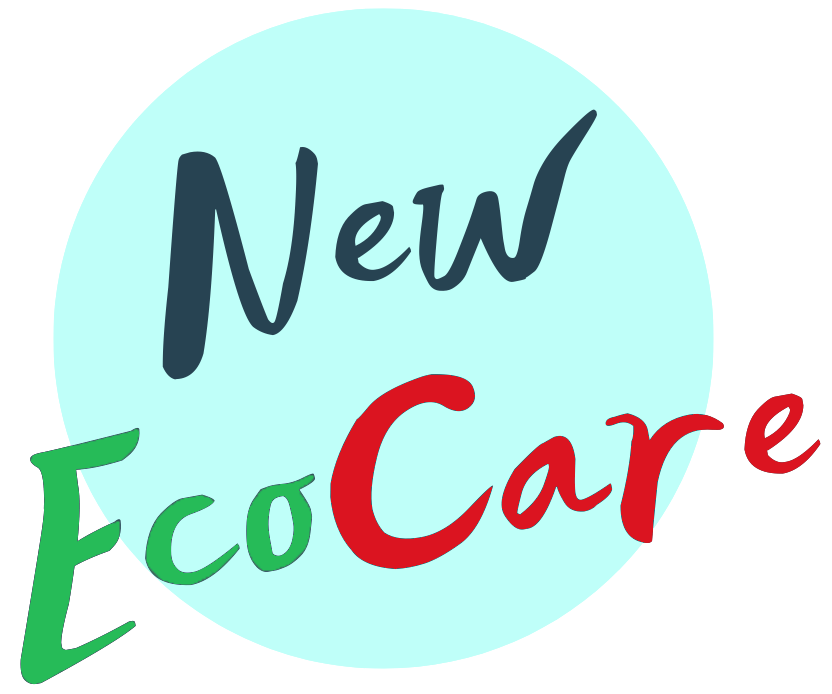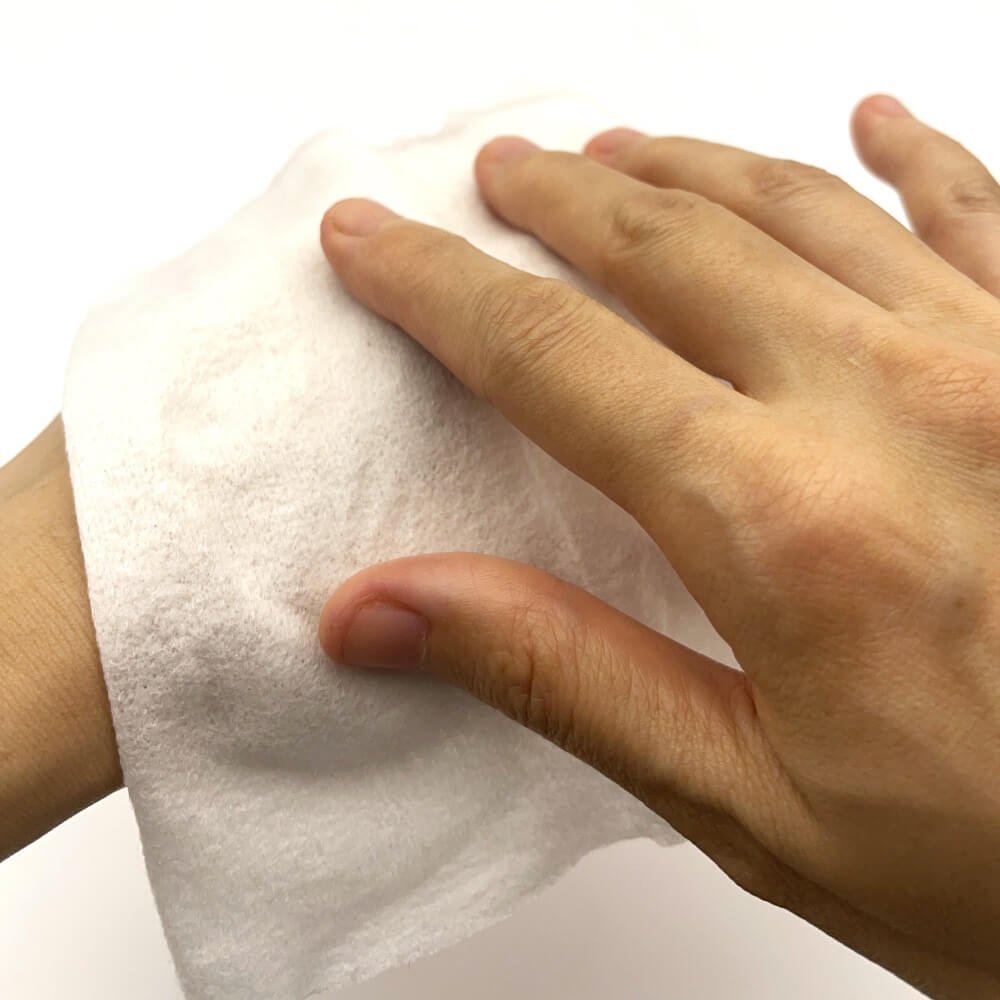في عالم اليوم سريع الإيقاع، لا مثيل للراحة التي توفرها المناديل المبللة التي توفر حلاً سريعاً للتنظيف والتعقيم يتناسب بسلاسة مع إيقاعات الحياة اليومية الصاخبة. من العناية بالطفل إلى التنظيف المنزلي، لا توفر هذه المناديل المبللة سهولة وفعالية في الاستخدام فحسب، بل توفر أيضًا فعالية بفضل مكوناتها المركبة بعناية. في هذا الاستكشاف، سنغوص في عملية تصنيع المناديل المبللة، وسنسلط الضوء على المكونات الأساسية التي تجعلها عنصرًا أساسيًا في منازلنا ومحافظنا. من خلال فهم ما يدخل في هذه المنتجات، يمكن للمستهلكين اتخاذ خيارات مستنيرة تتماشى مع وعيهم الصحي والبيئي.
تاريخ المناديل المبللة
ظهرت فكرة المناديل المبللة في منتصف القرن العشرين، وهي من بنات أفكار البحث عن الراحة القصوى في النظافة الشخصية والنظافة المنزلية. تم تطويرها في الأصل على يد آرثر جوليوس في عام 1957، والذي أطلق عليها اسم "Wet-Nap"، وكانت هذه الإصدارات المبكرة مخصصة في المقام الأول لتنظيف اليدين قبل وبعد الوجبات. لم يمضِ وقت طويل قبل أن تتوسع إمكانات المناديل المبللة وتتحول إلى أشكال متنوعة، بما في ذلك مناديل الأطفال المبللة ومناديل التجميل وحتى المناديل المبللة الصناعية المستخدمة في مختلف البيئات المهنية.
على مر العقود، تطورت المناديل المبللة بشكل كبير. فقد قام المصنعون بتحسين تركيباتها باستمرار، مستجيبين بذلك لطلبات المستهلكين للحصول على منتجات فعالة ومراعية لاحتياجات البشرة والبيئة. واليوم، لا تعكس رحلة المناديل المبللة من فكرة بسيطة إلى منتج متعدد الأوجه الابتكار فحسب، بل تعكس أيضًا استجابة للوعي المتزايد بالآثار الصحية والبيئية.
المكونات الرئيسية في المناديل المبللة
الماء: القاعدة الأساسية
يكمن الماء في قلب كل منديل مبلل في كل منديل مبلل، وهو المكون الأساسي الذي يعمل كحامل للعناصر الأخرى. ولكن ليس أي ماء يفي بالغرض - فالماء المستخدم في المناديل المبللة يخضع لعمليات تنقية لإزالة أي شوائب، مما يضمن أن يكون لطيفاً وآمناً على البشرة. ويؤكد هذا الاهتمام الدقيق بجودة المياه على الالتزام بالسلامة الذي يعد أساسياً في إنتاج المناديل المبللة.
المنظفات: تركيبات مصممة خصيصًا
بناءً على الاستخدام المقصود منها، يتم تزويد المناديل المبللة بعوامل تنظيف مختلفة. على سبيل المثال، تحتوي مناديل الأطفال المبللة على منظفات لطيفة مناسبة للبشرة الحساسة، بينما تحتوي المناديل المبللة المصممة للتنظيف المنزلي على منظفات أكثر قوة لمعالجة الدهون والأوساخ بفعالية. ويُعد اختيار المنظف أمراً بالغ الأهمية، حيث يجب أن يوازن بين الفعالية والحاجة إلى تقليل تهيج البشرة المحتمل.
المرطبات: لمسة من اللطف
لمقاومة أي آثار جفاف للمنظفات، خاصةً في منتجات التعقيم التي تحتوي على الكحول، تتم إضافة مرطبات مثل الصبار وفيتامين E. تساعد هذه المكونات على تهدئة البشرة وحمايتها وتوفير حاجز يحبس الرطوبة ويعزز نعومتها.
المواد الحافظة: حراس مدة الصلاحية
تلعب المواد الحافظة دورًا حيويًا في إطالة العمر الافتراضي للمناديل المبللة من خلال منع نمو الميكروبات. على الرغم من أن استخدام المواد الحافظة مثل البارابين قد أثار الجدل، إلا أن الصناعة تتجه نحو استخدام المواد الحافظة الطبيعية لتتماشى مع تفضيل المستهلكين المتزايد للعلامات "الأنظف".
يتم اختيار كل مكوّن في المناديل المبللة بعناية فائقة، حيث يتم الموازنة بين الفعالية وسلامة المستهلك وراحته. إن عملية التركيب الدقيقة هذه هي ما يجعل المناديل المبللة رفيقًا موثوقًا به في الحياة اليومية، مما يوفر الاطمئنان إلى أنها آمنة لأحبائنا وأنفسنا.
أنواع المناديل المبللة
مناديل مبللة للأطفال: لطيفة ومهدئة
صُممت مناديل الأطفال المبللة بأقصى قدر من المراعاة للبشرة الحساسة. فهي خالية من المواد الكيميائية القوية وغالبًا ما تكون غنية بالعوامل الملطفة مثل البابونج والصبار، وتوفر هذه المناديل تنظيفًا لطيفًا لبشرة الأطفال الرضع الحساسة. لا يعتمد عليها الآباء والأمهات في تغيير الحفاضات فحسب، بل يعتمدون عليها أيضًا في مسح اليدين والوجه، مما يجعلها من المناديل متعددة الاستخدامات التي لا غنى عنها في العناية بالطفل.
مناديل مستحضرات التجميل: الجمال أثناء التنقل
تؤدي مناديل التجميل المبللة التجميلية وظائف متعددة؛ فيمكنها إزالة المكياج وتنظيف البشرة أو حتى توفير مكونات مرطبة. وقد صُممت هذه المناديل المبللة لتكون مريحة وملائمة للبشرة، وهي أساسية في العديد من الحقائب لوضع لمسات سريعة على البشرة طوال اليوم، حيث توفر دفعة منعشة بمكونات مثل حمض الهيالورونيك وفيتامين C الذي يعزز صحة البشرة.
مناديل مطهرة: فعالة ضد الجراثيم
وتحتوي المناديل المطهرة ذات الصلة بشكل خاص في سياقات الصحة العامة على مكونات مضادة للميكروبات قادرة على قتل البكتيريا والفيروسات على الأسطح. تُعد هذه المناديل جزءًا لا يتجزأ من أماكن الرعاية الصحية والصالات الرياضية والمدارس والمنازل، وتلعب دورًا حاسمًا في استراتيجيات مكافحة العدوى.
مناديل التنظيف العامة: تعدد الاستخدامات في التنظيف
من عدادات المطبخ إلى بلاط الحمامات، فإن مناديل التنظيف العامة مشبعة بمواد التنظيف التي تعالج الأوساخ والبقع بفعالية. وغالباً ما تحتوي على روائح مثل الليمون أو اللافندر، فهي لا تنظف فقط بل تترك أيضاً رائحة لطيفة وراءها.
عملية التصنيع
اختيار المادة
تبدأ رحلة صنع المناديل المبللة باختيار القماش. وعادةً ما يتم استخدام الأقمشة غير المنسوجة، وهي أقمشة ناعمة ومتينة وممتصة. تُصنع هذه الأقمشة من ألياف مختلفة مثل القطن أو الحرير الصناعي أو البولي بروبيلين، وهي مصممة خصيصًا لنوع المناديل المبللة المحدد والاستخدام المقصود منها.
تحضير محلول الترطيب
تتضمن الخطوة التالية تحضير محلول الترطيب، وهو عبارة عن خليط من الماء والمنظفات والمرطبات والمواد الحافظة. يتم إعداد هذا المحلول بعناية لضمان تنظيفه بفعالية مع كونه آمنًا على البشرة والأسطح الأخرى.
عملية التشريب
أثناء عملية التصنيع، يتم تغذية القماش غير المنسوج من خلال ماكينة حيث يتم تشبعه بمحلول الترطيب. تضمن هذه العملية، المعروفة باسم التشريب، ترطيب النسيج بالتساوي والحفاظ على توازن الرطوبة المناسب للفعالية وطول العمر.
التقطيع والطي
بمجرد التشريب، يتم تقطيع القماش إلى مناديل فردية. ثم يتم طيّها في تشكيلات مختلفة حسب متطلبات التعبئة والتغليف. تتم عملية الطي آليًا لضمان الاتساق والكفاءة.
التعبئة والتغليف
التعبئة والتغليف هي الخطوة الأخيرة في عملية الإنتاج، وهي ضرورية للحفاظ على رطوبة المناديل وسلامتها. وتتراوح خيارات التغليف من العبوات اللينة القابلة للإغلاق إلى الأحواض الصلبة، المصممة لتكون مريحة للمستخدمين وتقلل من تعرضها للهواء الذي قد يؤدي إلى جفاف المناديل.
معايير الجودة والسلامة
الرقابة التنظيمية يخضع إنتاج المناديل المبللة للوائح صارمة لضمان سلامتها للاستخدام من قبل المستهلكين. ففي الولايات المتحدة الأمريكية، تشرف إدارة الغذاء والدواء الأمريكية (FDA) على المناديل المبللة ذات الخصائص المطهرة، بينما تنظم وكالة حماية البيئة (EPA) تلك التي يتم تسويقها كمطهرات. تضمن هاتان الوكالتان استيفاء المناديل المبللة لمعايير السلامة والفعالية الصارمة قبل بيعها.
الامتثال والاختبار يجب على المصنعين إجراء اختبارات صارمة للامتثال لهذه المعايير، بما في ذلك اختبارات الثبات واختبارات الفعالية وتقييمات السلامة. تتحقق هذه الاختبارات من أن المناديل المبللة تعمل كما هو معلن عنها ولا تحتوي على مستويات ضارة من أي مواد.
الشهادات تسعى العديد من الشركات المصنعة للمناديل المبللة أيضاً للحصول على شهادات من منظمات خارجية، مثل المؤسسة الوطنية للصرف الصحي (NSF) أو EcoLogo، لإثبات الامتثال لمعايير السلامة والمعايير البيئية الإضافية. تساعد هذه الشهادات على طمأنة المستهلكين بشأن جودة وسلامة المنتجات التي يستخدمونها.
تعمل هذه الأقسام على توسيع فهم القارئ للمناديل المبللة من خلال استكشاف الأنواع المتنوعة المتاحة، وتفاصيل عملية التصنيع، وتسليط الضوء على معايير الجودة والسلامة الصارمة التي تحكم إنتاجها. لا يقتصر هذا النهج الشامل على تقديم المعلومات فحسب، بل يطمئن المستهلكين أيضاً بشأن سلامة المنتجات التي يعتمدون عليها يومياً.
الأثر البيئي
مسألة قابلية التحلل البيولوجي
أحد أكثر الشواغل إلحاحًا فيما يتعلق بالتأثير البيئي للمناديل المبللة هو قابليتها للتحلل البيولوجي. فغالباً ما تكون المناديل المبللة التقليدية مصنوعة من ألياف اصطناعية لا تتحلل بسهولة، مما يؤدي إلى نفايات كبيرة في مدافن النفايات، وفي بعض الأحيان تسد أنظمة الصرف الصحي عند التخلص منها بشكل غير صحيح. وتسلط قضية "الألياف المبللة" - وهي كتل كبيرة من النفايات في شبكات الصرف الصحي تتكون أساساً من المناديل المبللة غير القابلة للتحلل الحيوي والشحوم - الضوء على الحاجة إلى ممارسات أكثر استدامة.
جهود الاستدامة
واستجابةً لهذه التحديات، يتجه المصنعون بشكل متزايد إلى المواد العضوية والقابلة للتحلل الحيوي. على سبيل المثال، بدأت بعض العلامات التجارية في إنتاج مناديل مصنوعة من ألياف نباتية 100%، والتي يمكن أن تتحلل مثل المناشف الورقية. بالإضافة إلى ذلك، تُبذل الجهود للحد من نفايات التغليف واستخدام المواد المعاد تدويرها حيثما أمكن، وبالتالي تقليل البصمة البيئية الإجمالية لهذه المنتجات.
تثقيف المستهلك
يتضمن جزء لا يتجزأ من تحسين الأثر البيئي للمناديل المبللة تثقيف المستهلكين حول طرق التخلص السليمة منها. فمن الأهمية بمكان أن يتم التخلص من المناديل المبللة، خاصة تلك التي لا تحمل ملصقًا على أنها قابلة للغسل، في سلة المهملات بدلاً من التخلص منها في المرحاض. وهذا يمكن أن يقلل بشكل كبير من الإجهاد البيئي الذي تسببه هذه المنتجات.
الابتكارات في تكنولوجيا المناديل المبللة
المواد القابلة للتحلل الحيوي
يركز الابتكار في تصنيع المناديل المبللة بشكل متزايد على الاستدامة. ويمثل تطوير مناديل مبللة قابلة للتحلل بالكامل تقدمًا كبيرًا في هذا المجال. تُصنع هذه المناديل المبللة باستخدام ألياف يمكن أن تتحلل في بيئة السماد العضوي المنزلي، مما يوفر حلاً يتماشى مع قيم المستهلكين الصديقة للبيئة.
التركيبات المحسّنة
بالإضافة إلى المواد، هناك أيضًا ابتكارات في التركيبات الكيميائية المستخدمة في المناديل المبللة. وتتميز المناديل المبللة الحديثة بمستويات منخفضة من المواد الحافظة وتتضمن بدائل طبيعية للمواد الكيميائية التقليدية، مما يجذب المستهلكين المهتمين بالصحة ويقلل من المهيجات المحتملة للبشرة.
رطوبة وصرف قابلة للتخصيص
أدت التطورات التكنولوجية أيضًا إلى تحسينات في كيفية تعبئة المناديل المبللة وتوزيعها. أصبحت حلول التغليف المبتكرة التي تسمح للمستخدمين بتعديل درجة رطوبة المناديل المبللة وتوزيع منديل واحد دون جفاف بقية العبوة أكثر شيوعًا، مما يعزز راحة المستخدم وطول عمر المنتج.
نصائح لاستخدام المستهلكين
الاستخدام الأمثل للمناديل المبللة
لتحقيق أقصى قدر من فوائد المناديل المبللة مع تقليل النفايات إلى الحد الأدنى، يجب على المستهلكين مراعاة احتياجاتهم الخاصة عند اختيار المنتج. على سبيل المثال، يمكن أن يساعد اختيار المناديل المبللة القابلة للتحلل الحيوي للأنشطة الخارجية في تقليل الأثر البيئي، في حين أن المناديل المبللة المضادة للحساسية هي الأفضل لذوي البشرة الحساسة.
التخلص السليم من النفايات
إن التخلص الصحيح من المناديل المبللة أمر بالغ الأهمية لحماية البيئة. فحتى المناديل المبللة التي تحمل ملصقًا على أنها قابلة للشطف يمكن أن تسبب مشاكل في أنظمة الصرف الصحي، لذا يُنصح بالتخلص من جميع المناديل المبللة في سلة المهملات ما لم تحدد الشركة المصنعة خلاف ذلك.
نصائح للتخزين
لضمان أن تظل المناديل المبللة فعالة ورطبة، يجب تخزينها في مكان بارد وجاف مع إغلاق العبوة بإحكام. يمنع التخزين السليم المناديل المبللة من الجفاف ويحافظ على فعالية محلول الترطيب.
الأسئلة الشائعة
- هل المناديل المبللة آمنة لجميع أنواع البشرة؟ صُممت معظم المناديل المبللة لتكون لطيفة على البشرة، ولكن يجب على الأشخاص ذوي البشرة الحساسة اختيار الخيارات الخالية من العطور والمضادة للحساسية لتجنب التهيج المحتمل.
- هل يمكنني التخلص من المناديل المبللة القابلة للتحلل في المرحاض؟ حتى إذا تم تسويق المناديل المبللة على أنها قابلة للتحلل الحيوي، يوصى عموماً بتجنب التخلص منها في المرحاض لأنها قد لا تتحلل بسرعة كافية لمنع حدوث انسدادات أو مشاكل أخرى في أنظمة الصرف الصحي.
- كم تدوم المناديل المبللة بعد فتحها؟ يبلغ العمر الافتراضي لمعظم المناديل المبللة حوالي عامين بعد فتحها. وبمجرد فتحها، من الأفضل استخدامها في غضون بضعة أشهر لضمان احتفاظها برطوبتها وفعاليتها.
- هل توجد بدائل صديقة للبيئة للمناديل المبللة التقليدية؟ نعم، يتوفر العديد من البدائل الصديقة للبيئة، بما في ذلك المناديل المبللة المصنوعة من الألياف الطبيعية القابلة للتحلل الحيوي والقابلة للتحلل الحيوي 100%.
- كيف يمكنني التأكد من استخدام المناديل المبللة للتنظيف بأمان؟ عند استخدام المناديل المبللة للتنظيف، تأكد من أنها مناسبة للسطح الذي يتم تنظيفه، واتبع تعليمات الشركة المصنعة. تجنب استخدام المناديل المبللة المطهرة على الجلد إلا إذا كانت مصممة خصيصاً للعناية الشخصية.
- ما الذي يجب أن أبحث عنه عند اختيار المناديل المبللة للعناية بالطفل؟ ابحثي عن المناديل المبللة الخالية من الكحول والمضادة للحساسية والمزودة بمرطبات طبيعية مثل الصبار أو البابونج، فهي لطيفة على بشرة الطفل وتمنع تهيجها.
الخاتمة
تُعد المناديل المبللة أداة مريحة ومتعددة الاستخدامات للنظافة والتنظيف، وتلعب دورًا مهمًا في أنماط الحياة العصرية. ومع تقدمنا إلى الأمام، سيستمر التركيز على الاستدامة وتثقيف المستهلكين والابتكارات التكنولوجية في تشكيل هذه الصناعة، مما يضمن إمكانية استخدام المناديل المبللة بشكل مسؤول وفعال دون الإضرار بصحة كوكبنا. من خلال اتخاذ خيارات مستنيرة واتباع أفضل الممارسات، يمكن للمستهلكين الاستمتاع بفوائد المناديل المبللة مع المساهمة في مستقبل أكثر استدامة.

